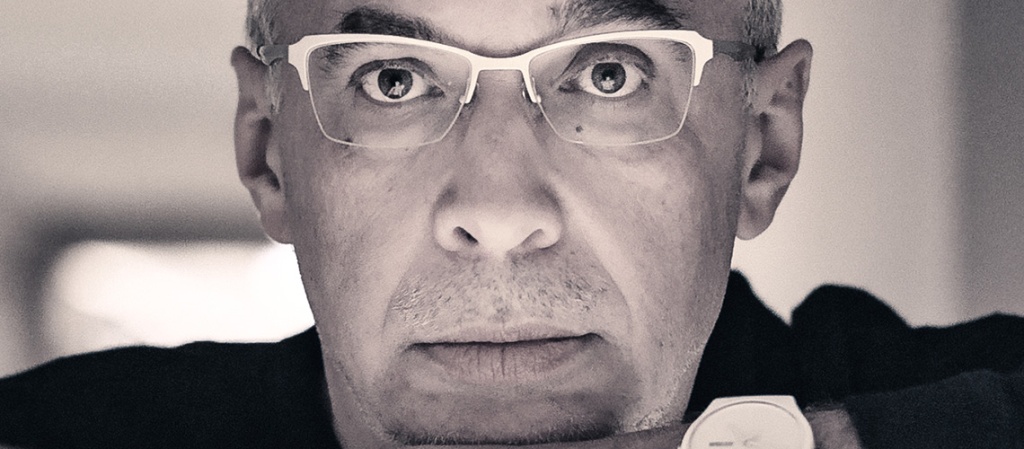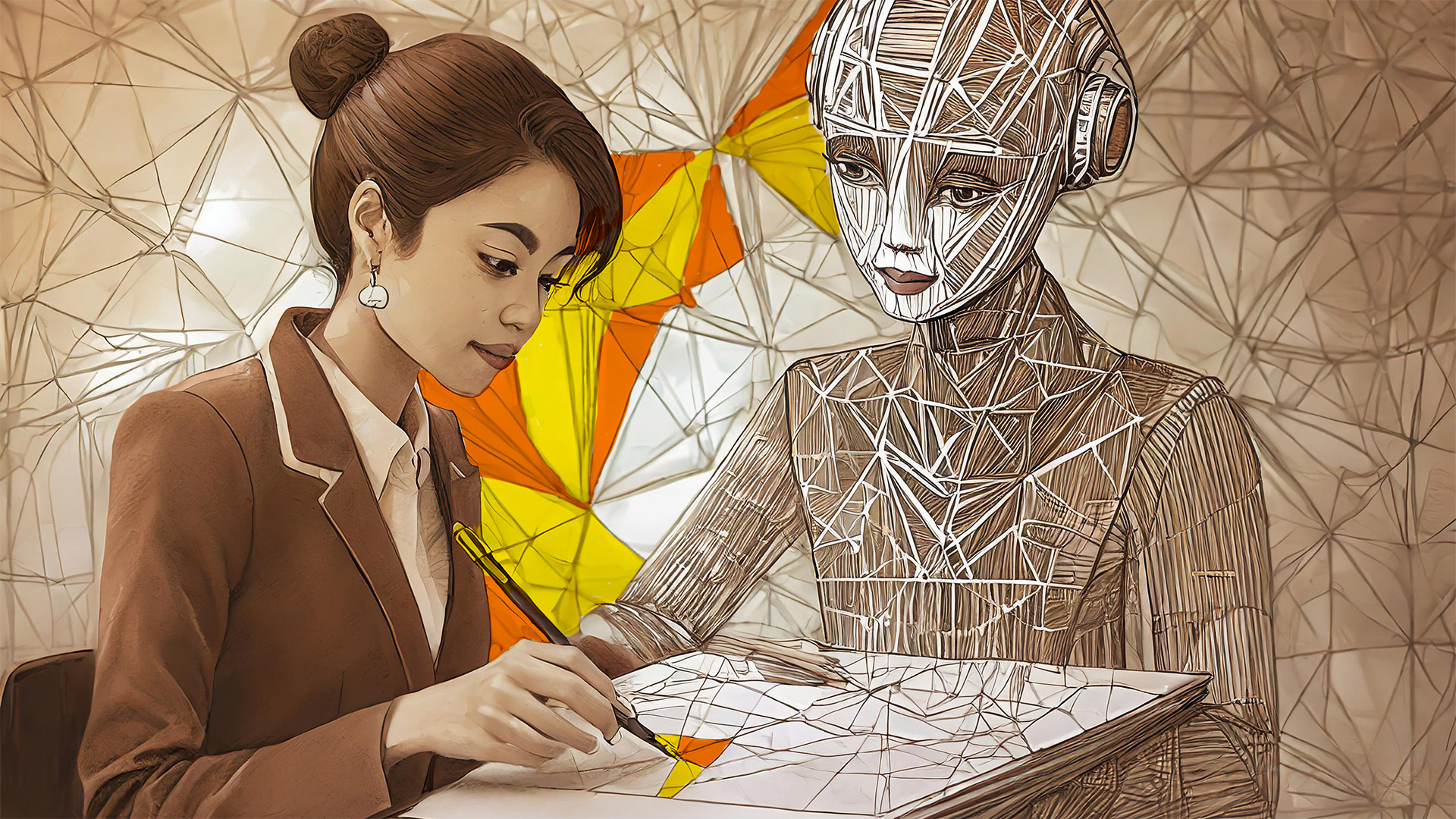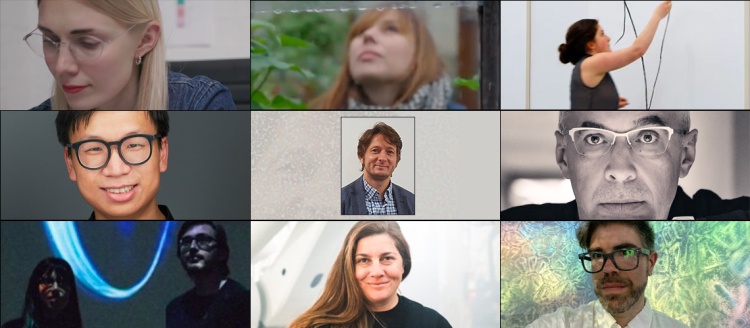Corbin Callaway, an art education graduate student at Fresno State and high school teacher, watched a student struggle in her digital art class. He was a natural at animation but had trouble understanding Adobe Photoshop and Illustrator tools and techniques.
“Our last project was to create a surreal movie poster digitally,” Callaway explained. “And so he used AI to render different photographs and then manipulate them, put them together.”
Once the base image was created, he then used the Adobe tools and what he learned with typography, to add the text to the image.
Callaway said the student told her he used artificial intelligence (AI) to create a portion of the project. While some teachers may have thought the student cut corners or even cheated, Callaway considered the experience holistically. The student had used AI as a tool to get him past the areas he struggled with, but still completed the project using the Adobe software required for the assignment.
“So for him using AI as a tool to kind of get through these obstacles where he didn’t quite understand, maybe using Photoshop and Illustrator to the best of his ability, he was still able to produce something very incredible visually and still incorporate his creation of things like the text and the colors and the rendering,” she said. “It did turn out to be pretty cool.”
New situations like Callaway’s, which have been spurred on by the ever-increasing access to AI tools, are why this spring’s Art Education Lecture/Workshop “AI or Not AI” series is so critical. The program features ten national and international artists, engineers and scholars. By featuring leading AI practitioners, the series underscores the role of AI as a tool in expanding creative boundaries and reshaping art education. Conversations like these have become crucial for art educators like Callaway to navigate the new waters brought by innovations in AI.
“When I chose those people, I tried to bring as many various backgrounds as I could,” said Dr. Ahran Koo, associate professor of art education. “I want our students and community members to be exposed to open-ended conversations throughout the two months of ten different workshops. Based on our own surroundings and previous knowledge, we can understand and digest in a way that can be helpful in our everyday lives.”

The guest speaker Koo is especially excited about is Lev Manovich at 3:30 p.m. Thursday, Feb. 29, on Zoom. A world-renowned artist, writer and one of the most influential theorists of digital culture, Manovich is the most cited author on the topics of digital art, digital culture, new media and cultural analytics fields. He began using computers to create digital art in 1984. His work has been exhibited in 14 solo and 122 international group exhibitions at many prestigious institutions.
“He will bring a lot of attention to our campus community internationally,” Koo said.
Koo began researching AI and its application in education and art about two years ago. In spring 2023, she invited five AI artists working in California to participate in her Art in Education lecture series.
“At that time, nobody really talked about AI,” said Koo. “It’s really interesting because every day, we hear something about AI. Every day it’s changing so much.”
Recent advancements in machine learning and neural networks have ushered in a new era of AI, leading to significant breakthroughs and widespread application in industries, healthcare, and everyday technology. As students, professionals and the general public begin to use AI in their everyday lives, ethical issues begin to arise. Issues surrounding plagiarism and copyright are often at the forefront of the ethics conversation as AI models scrape the internet for information and source images.
While it is possible to have AI complete artistic or humanistic assignments, that practice is often seen as undesirable or detrimental to the learning process and could be considered cheating. However, educators and students are finding that rather than having AI complete an entire project, using AI as a tool to get started or help get past trouble spots can spawn creativity and become an important part of learning.

“I’ve used ChatGPT in assignments, admittedly, but it was never to copy and paste,” said Vivian De La Cruz, an undergraduate in studio art. “The essay was completely my own, but it helped, like an assistant or a tutor, to help my mind expand calmly.”
As the world continues to navigate the complexities and potentials of artificial intelligence, the journey from its conceptual beginnings to its current role in society underscores a remarkable evolution.
“Through this webinar series, we can be more exposed to these kinds of conversations,” Koo said. “We can have the opportunity to hear and talk together.”
As we stand on the cusp of new discoveries, the conversation around AI’s ethical use and its integration into our daily lives becomes increasingly vital, promising a future where technology and humanity advance hand in hand. Traversing the new and unfamiliar landscape of Artificial Intelligence is something that cannot be avoided in this day and age. This lecture series brings a vanguard of artists, educators, and innovators who help the community at Fresno State understand AI as a tool that aims to deepen our culture of creativity and excellence.
——
Conor Hustedde and ChatGPT contributed to this story.

